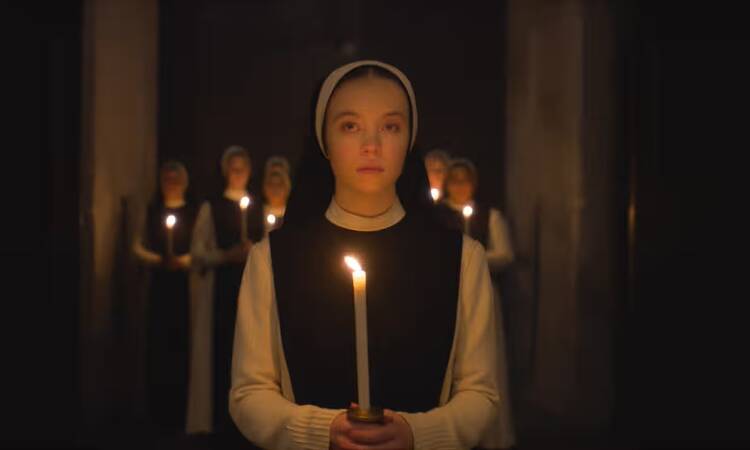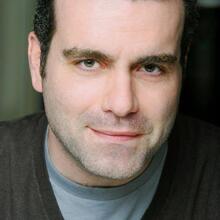In an early moment of Michael Mohan’s “Immaculate,” the film’s protagonist, Sister Cecilia (Sydney Sweeney) asks her fellow religious sister, Gwen (Benedetta Porcaroli) if she believes in God, to which she responds, “Of course I do! Life is so cruel, only a man can be responsible.”
This line sets the feminist tone in the unlikely space of the convent-horror film. Indeed, “Immaculate” is the latest entry into the recently emerging subgenre of “monstrous nun” films and easily its most high-profile, with Sweeney—one of the fastest-rising stars in Hollywood thanks to her roles on HBO’s “Euphoria” and the first season of “The White Lotus”—serving not only as the film’s star but its producer as well.
“Immaculate” is a cut above its monstrous nun cinematic cohorts, due in no small part to its decidedly feminist take. Yet the bottom line with a horror film is always the horror, and it is in this area that the film comes up a bit short.
A history of nun movies
Nuns in movies are almost as old as movies themselves. Since the time early American cinema icon, Lillian Gish, took the habit in 1923’s 143-minute silent epic, “White Sister,” the vowed woman religious has been the subject of fascination for film audiences in the West. In her turn in the cinematic convent, Gish played a young heiress who, grieving for her fiancé (played by Ronald Colman) whom she mistakenly believes to be dead, enters a religious order, which naturally leads to all sorts of complications in the vein of the Victorian melodrama that served as its source material. The film did well enough that it was remade a decade later with sound and starring Helen Hayes, once dubbed “the First Lady of American Theater,” when they used to use phrases like that with a straight face.
However, it was not until after World War II when the cinematic nun really took hold in the Western cultural landscape. In the two decades following the war, cinematic depictions of the religious sister ran the spectrum from the sublime (Michael Powell and Emeric Pressburger’s “Black Narcissus”) to the absurd (“Change of Habit,” starring America’s TV sweetheart, Mary Tyler Moore as a nun in the city being wooed by a doctor played by no less than the King himself, Elvis Presley).
Nuns in movies reached their apex during the mid-1960s with the release of the cinematic classic, “The Sound of Music,” a period that also saw the release of the Hayley Mills/Rosalind Russell coming of age film, “The Trouble with Angels” along with “The Singing Nun” starring Debbie Reynolds as a fictional version of the real-life Soeur Sourire (Sister Smile), the Belgian Dominican nun whose song “Dominique” reached the top of the U.S. pop charts in 1963. All the while, Sally Field, post-Gidget but long before her Academy Award winning film career, could be seen soaring through the skies on TV’s “The Flying Nun.”
The significant cultural shift in the West, along with the rise of second wave feminism, diffused the American public’s fascination with nuns by the start of the 1970s. Those same societal shifts, however, arguably proved to be the influence overseas for the collection of “nunsploitation” films that emerged out of Catholic Europe (and curiously Japan) during that same decade and included titles such as “The Sinful Nuns of St. Valentine,” “Killer Nun” and “Sins of Sister Lucia.” From the 1980s until fairly recently, cinematic depictions of female religious were fairly infrequent, save for prestige adaptations of stage works such as “Agnes of God” and “Doubt” or cultural anomalies like the early 1990s music franchise, “Sister Act.”
The last decade or so has seen the re-emergence of the nun, this time primarily within the context of the horror genre. In many ways the foregrounding of the female religious in the horror film seems like an obvious and inevitable evolution based on the “nunsploitation” films of decades past, as well as the long-standing position of their clerical brother, the priest, in the exorcism subgenre of horror.
And yet, I would argue that there is something of a “punching down” quality to the recent slate of monstrous nun films. The monstrous nun is born out of previous cultural archetypes of the female religious, namely the cruel or abusive nun. This type emerged primarily from the experience of Baby Boomers during the post-World War II era of Catholic education and the corporal punishment that was sometimes inflicted by female religious in the classrooms. These experiences would be represented across a multitude of media platforms as the Boomer generation came of age in the 1970s and 1980s, often for comic effect, as shown in an early part of the John Landis film “The Blues Brothers” as well as in John R. Powers’ novel-turned-Broadway musical “Do Black Patent Leather Shoes Really Reflect Up?”
What was never really acknowledged in these texts and still remains relatively unspoken is that the female religious of that and previous eras were under the thumb of a patriarchal institution, had no options aside from marriage/motherhood or the religious life, and frequently had little education before being placed in the classroom. While I do not condone or approve of abuse of any kind, what has literally become the demonization of the nun in the artistic realm takes no notice of and offers no critique of the systems and structures that enabled and nourished those abusive environments.
A feminist tale
Which is perhaps why “Immaculate,” in spite of its many flaws, should be given its due as a decidedly feminist take on the “monstrous nun” horror film. What sets it apart from its sister “scary sister” movies of recent years is that it is clearly intended to be read as an allegory for the Catholic Church’s historical position on female bodily autonomy and reproductive rights, a point that is punctuated by the heroine’s “choice” in the film’s final scene.
The film tells the story of Cecilia (Sydney Sweeney), a young American woman who has moved to Italy to join a female religious congregation that focuses on the care of elderly and infirm female religious. She soon meets Father Tedeschi (Álvaro Morte), a former geneticist who now assists at the infirmary. Soon, Cecilia discovers that she is pregnant, despite never having had sexual intercourse (yeah, it goes there) and discovers a vast conspiracy by religious officials (yeah, it goes there, too!), which leads to a climactic chase within the catacombs of St. Sebastian. The film is a pastiche of other earlier, better films, both horror and otherwise, including “Agnes of God,” “Rosemary’s Baby” and “The DaVinci Code.” While the film works on a low-grade level of feminism, its problem is that it is a horror film, and the film’s continual objectification of the female body as a location of sex and violence, a standard motif of horror, undermine its ideological intentions.
It has been argued that the continuing fascination with the female religious onscreen is due in part to the perceived mystery of what is beneath the veil and behind convent walls. Indeed, it should be noted that it is the rare nun film that does not feature its female subjects in full preconciliar habit, cloistered within a monastery, an image which bears little resemblance to the lives of a great majority of female religious in the West in the past 60 years. “Immaculate” is no different, as the film’s attempts at mystery are entirely reliant upon its European setting and quasi-medieval costuming and set decoration. As such, the film’s sole means of effective horror is the mutilation of parts of the body (in this case solely the female body) as a means of evoking repulsion and shock from its audience.
While “Immaculate” proves to be an intriguing entry into the pantheon of religious-oriented horror films, it does not really deliver as a horror film, in that the fear and repulsion which the genre nominally necessitates is only partially there in the graphic depictions of bodily mutilation. Ultimately, there is little to fear here, and the plot twist does little to assist the audience in its suspension of disbelief.
And so, I tip my hat to “Immaculate” for attempting to add a feminist spin on a decidedly misogynist genre, yet I must shake my head at its inability to transcend those very elements that make the horror film decidedly anti-female.








